As I prepared for my first bikepacking trip, I had two key questions – When packing for bikepacking, what bags? And what goes where?
I scoured the Internet far and wide, found lots of great bag reviews, but very few shares of what actually fit in the bags.
This past weekend I finished what was intended as my first true bikepacking trip, but due to weather and lack of camping spaces, I stayed at friends the first night and a yurt type thing the second, so the tent stayed at home. That said, besides keeping the tent at home, everything else was packed according to plan.
And this is what it looked like.
The Bikepacking Bag Setup
For this two-night trip, I decided to pack as light as possible and even with that, I was amazed at how little space was left.
The setup I chose included two feed bags off the front handlebar for my snacks and quick pick items, a front handlebar bag for my camera and other frequent items, the seat bag for my sleep setup and spare clothes, and the frame bag for everything else.
This particular adventure was the Durham Destroyer Full Monty, a 300km trip from Port Perry through Uxbridge, Fenelon Falls, Bobcaygeon, and Lindsay. Passing through so many large towns, the one thing I didn’t need to pack was any food or cookware since I’d have easy access to food all along the way.
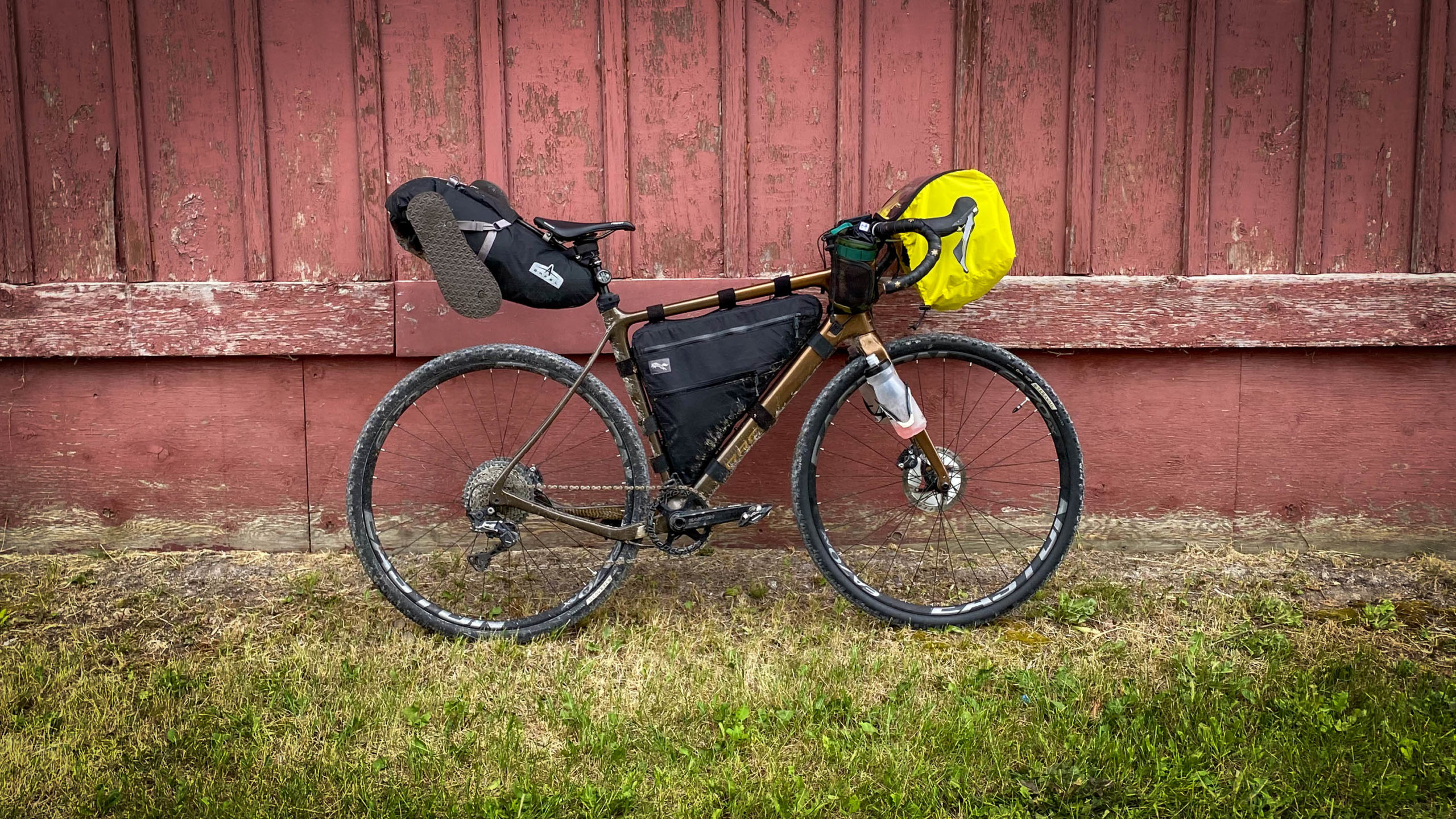
Bikepacking Setup – Feedbags
I used two Thief Bikepacking Water Holes in the front.
The one on the left held all my critical supplies such as sunscreen, wipes, a small thing of chain oil (probably the most important thing I packed), soap, sanitizer, and an extra co2 cartridge.
The one on the right held all my snacks, which initially consisted of a combination of at least ten granola bars, Clif bars, gels, Nuun tabs, and more
As the trip wore on, the snacks were depleted, and the temps went up, so I ended up combining the two into one and using the left watering hole as storage for extra water when required.
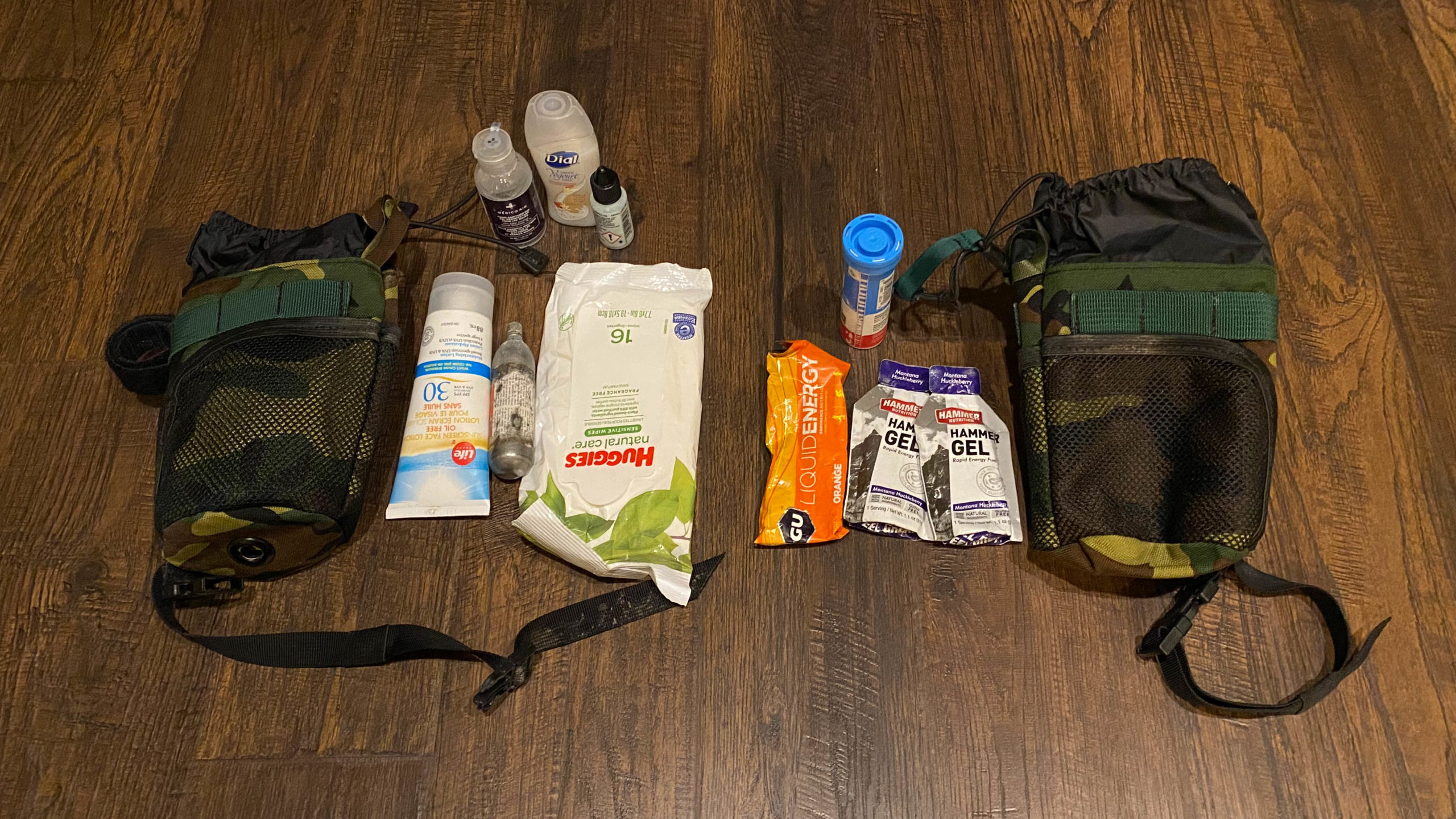
Bikepacking Setup – Front Handlebar Bag
My front handlebar bag is the Arkel Front Handlebar Bag Large which carried my camera, sleeping bag liner (primarily to help hold my camera in place), a set of Castelli UPF arm skins (not used), clip-on visibility lights, a tire repair kit I picked up last minute, rain cover, tissues and masks.
If keeping the camera protected and close at hand wasn’t so important to me, I would definitely consider swapping out this bag for some sort of front roll for the perceived extra space that it might offer.
An important note about this bag is it does sit far enough in front of the handlebars that my tent, if packed, would have fit between the handlebars and the front bag.
Total Packed Weight As Displayed – 6.6lbs
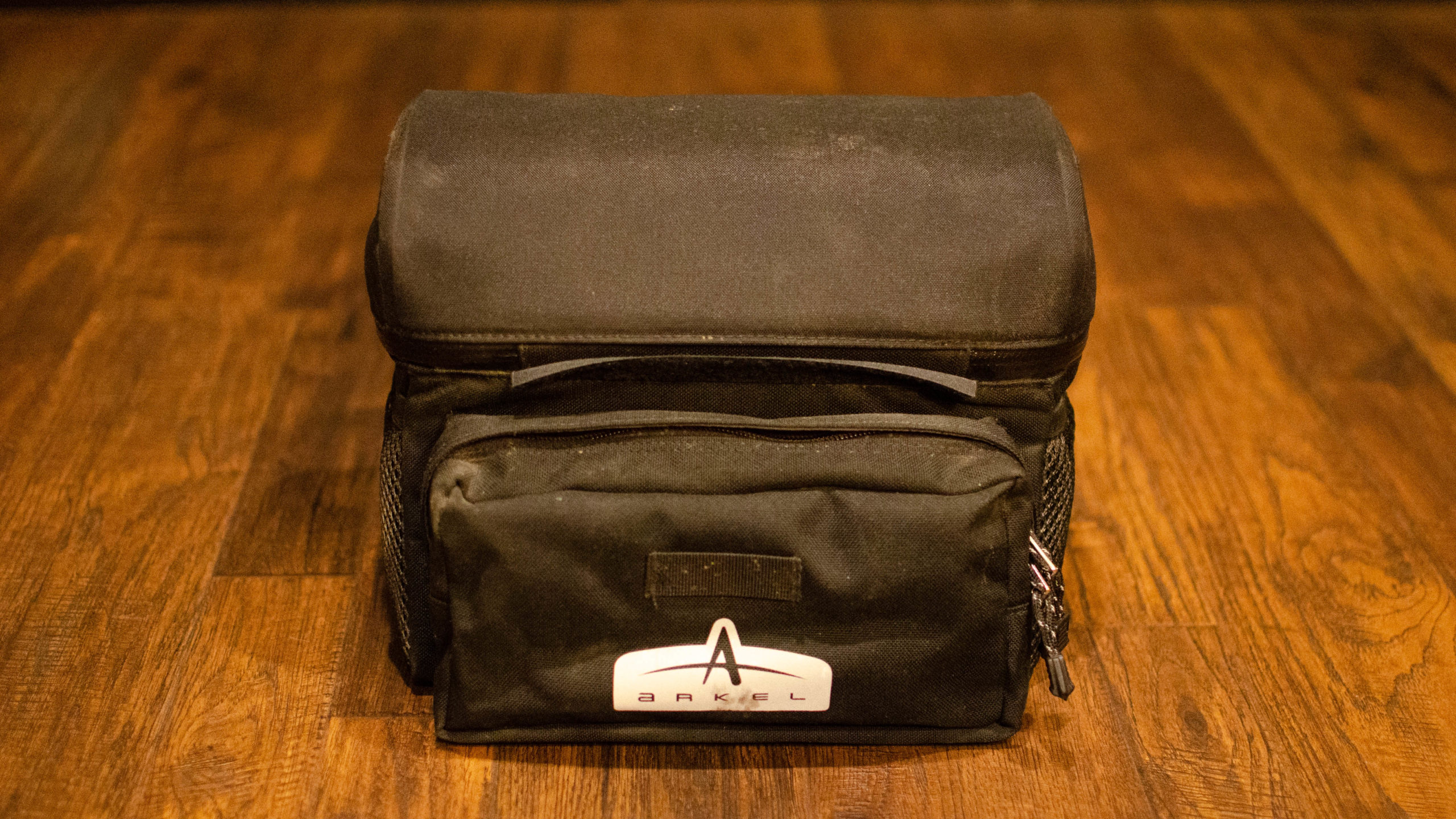
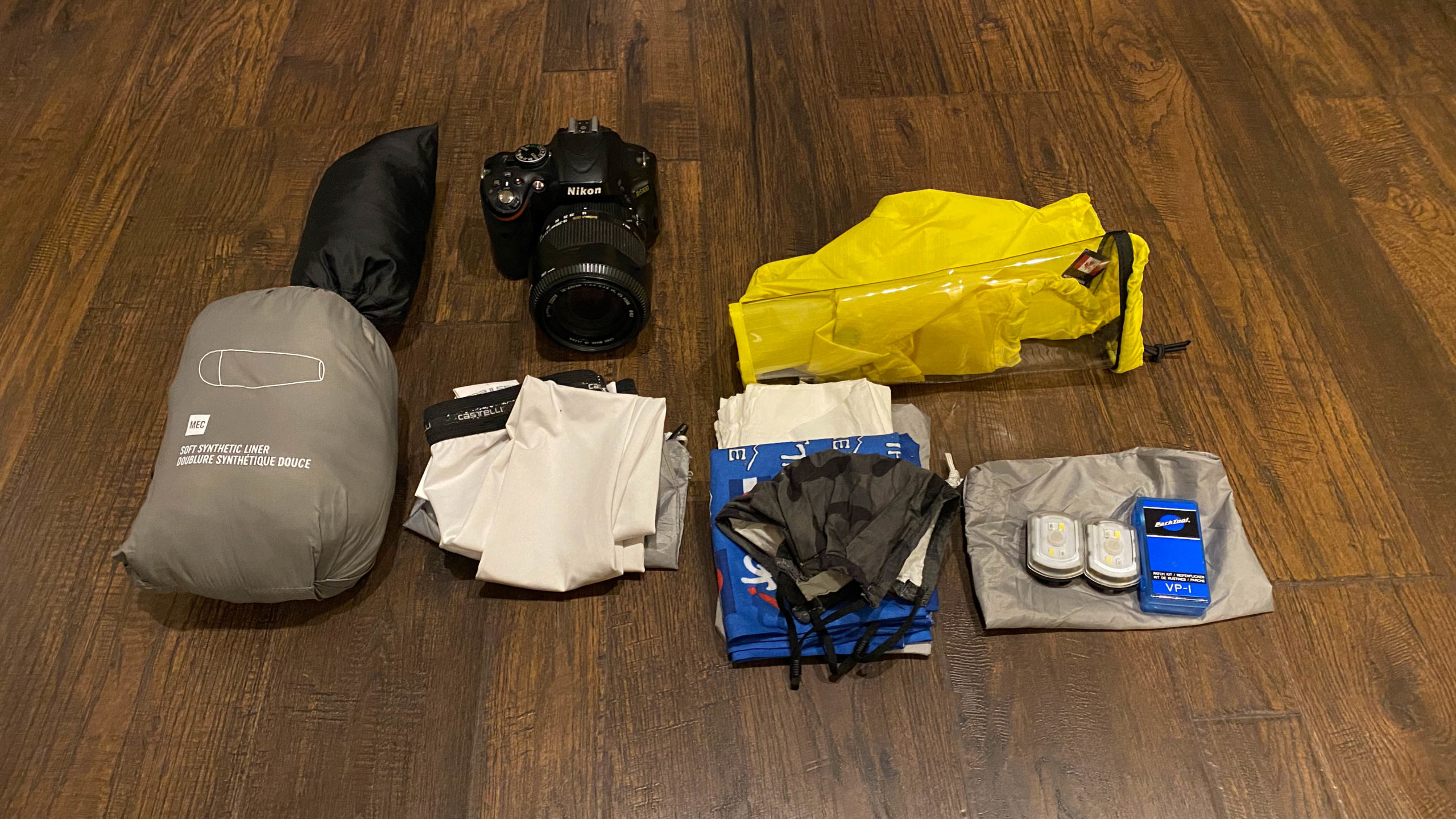
Bikepacking Setup – Seat Pack
My Arkel Seatpacker 15 bag held my complete sleep kit and extra clothes.
Included in this bag were the MEC Talon Light sleeping bag, MEC Vectair sleeping pad, Nemo Fillo Backpacking Pillow, cycling shorts and jersey, lightweight camp towel, two pairs of socks, short and long sleeve shirts, and a pair of boxers and long johns. Also strapped outside the main bag was a pair of cheap old navy sandals.
What surprised me the most here was not that everything fit, but how little room I had left.
My sleeping bag is pretty small when fully compressed, and there was no room left over to hold anything else. If I had to change one thing, perhaps that would be leaving the long johns at home, not that it would have made much of a difference.
Total Packed Weight As Displayed – 8lbs
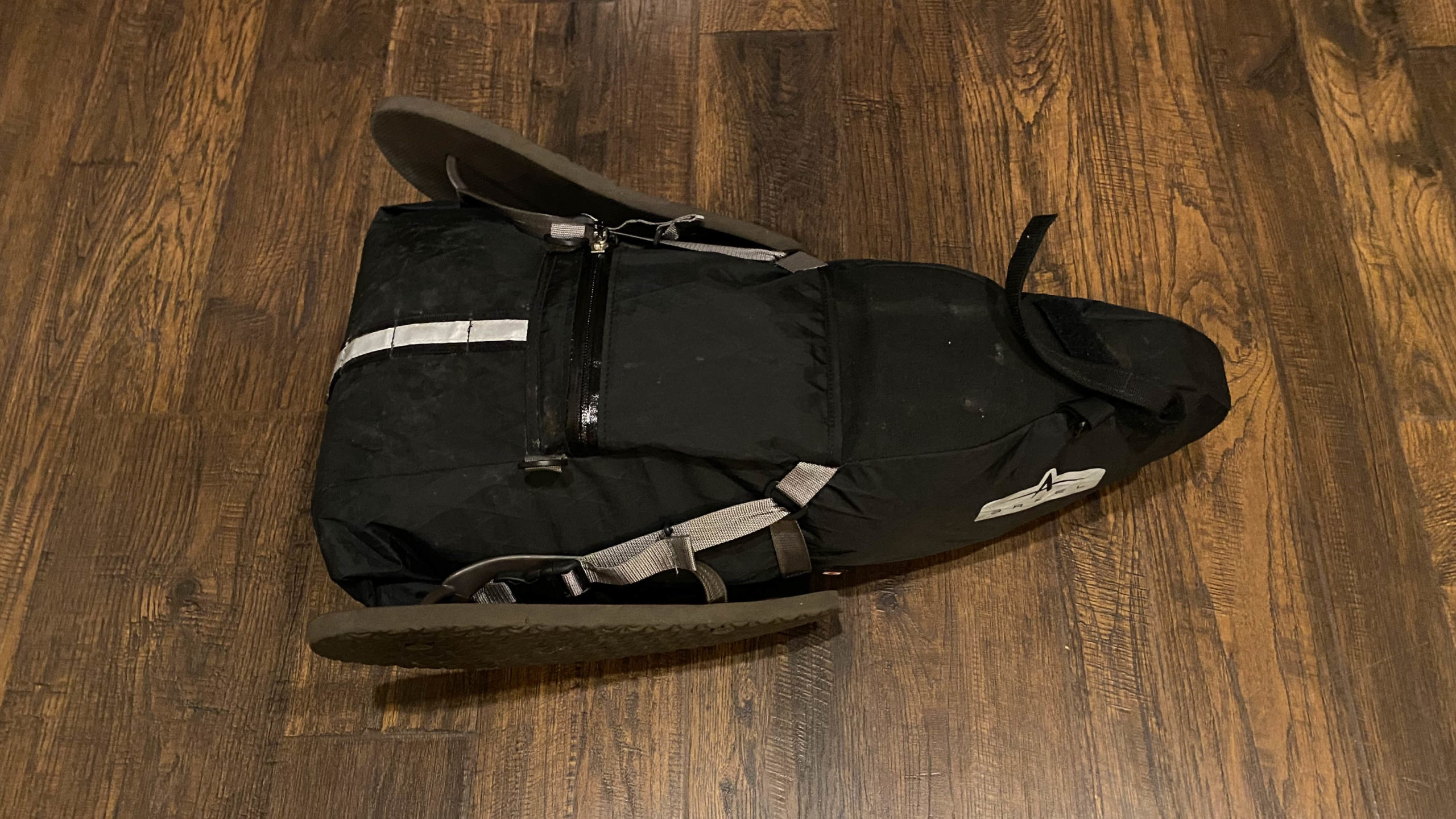
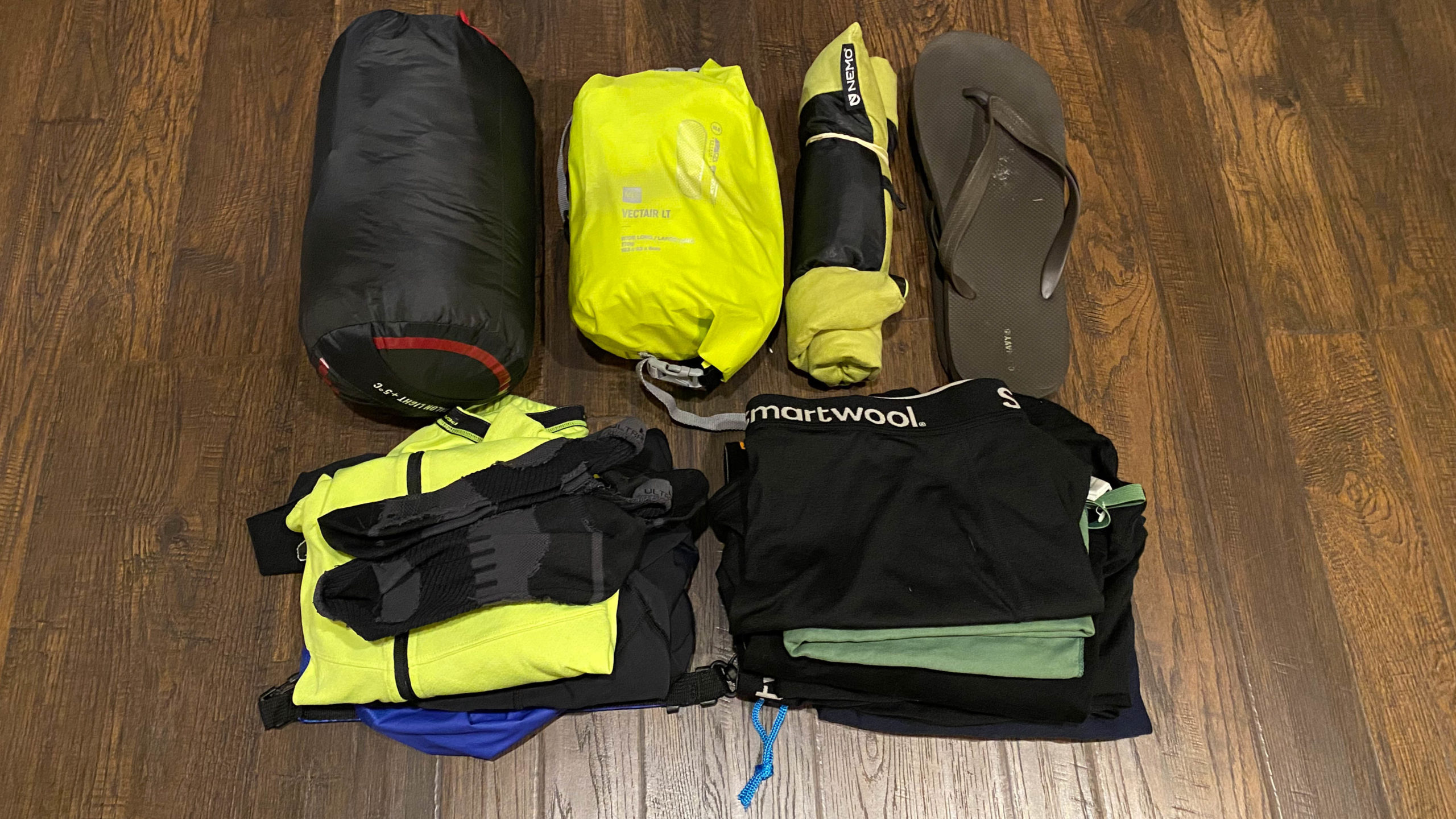
Bikepacking Setup – Frame Bag
My frame bag held everything else. Mainly anything I may need to access throughout the day, but that didn’t need to be overly close at hand.
This included a stocked bike repair kit, fleece-lined arm sleeves, trail mix, a small first aid kit, battery chargers, sunglasses, the Kool Stop Tire Bead Jack, which makes even the hardest tires to get on easy, and a small bag of toiletries.
There was still plenty of room left over to add at least two bottles of water and a few more snacks when required.
Total Packed Weight As Displayed – 5.1lbs
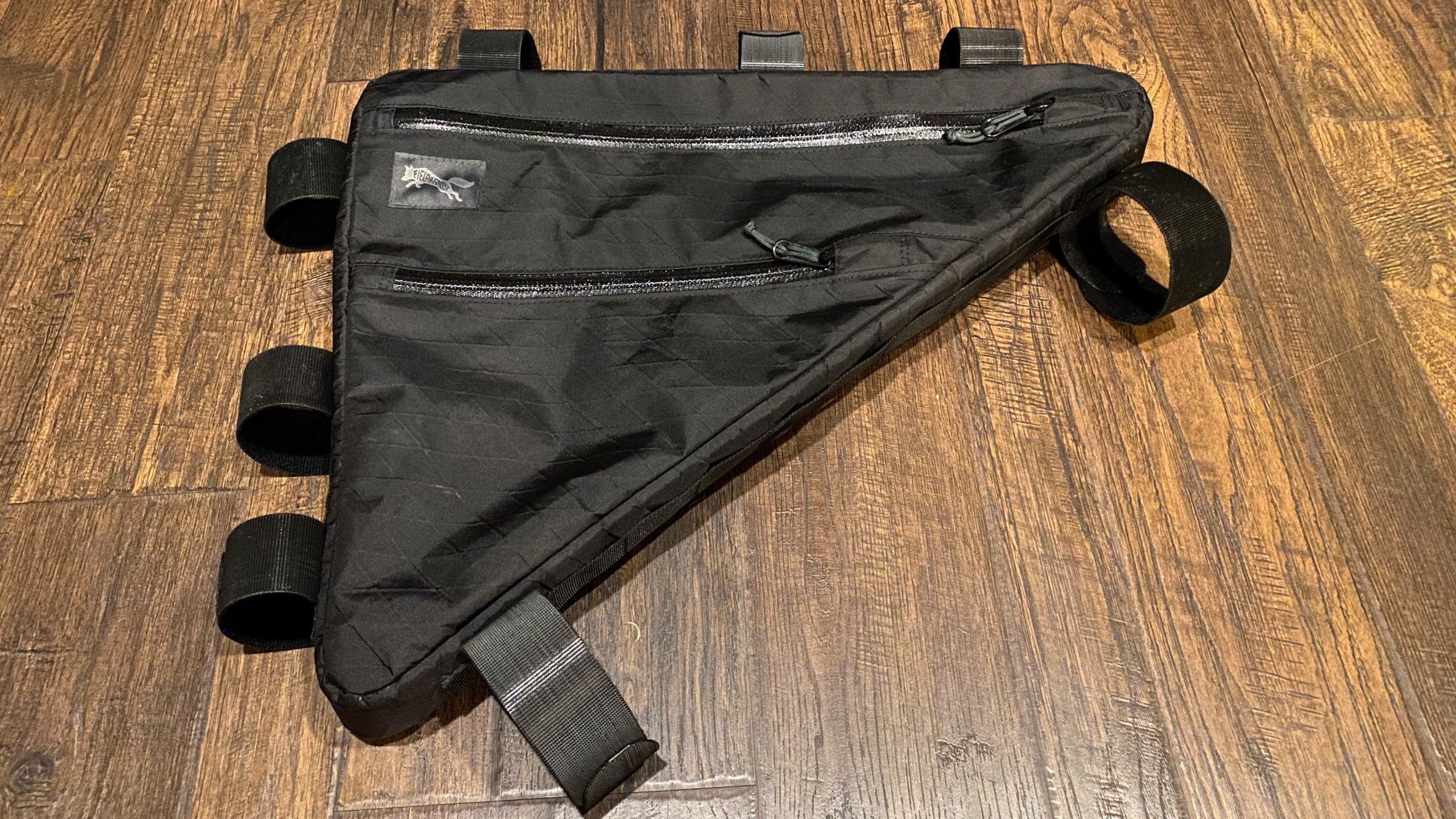
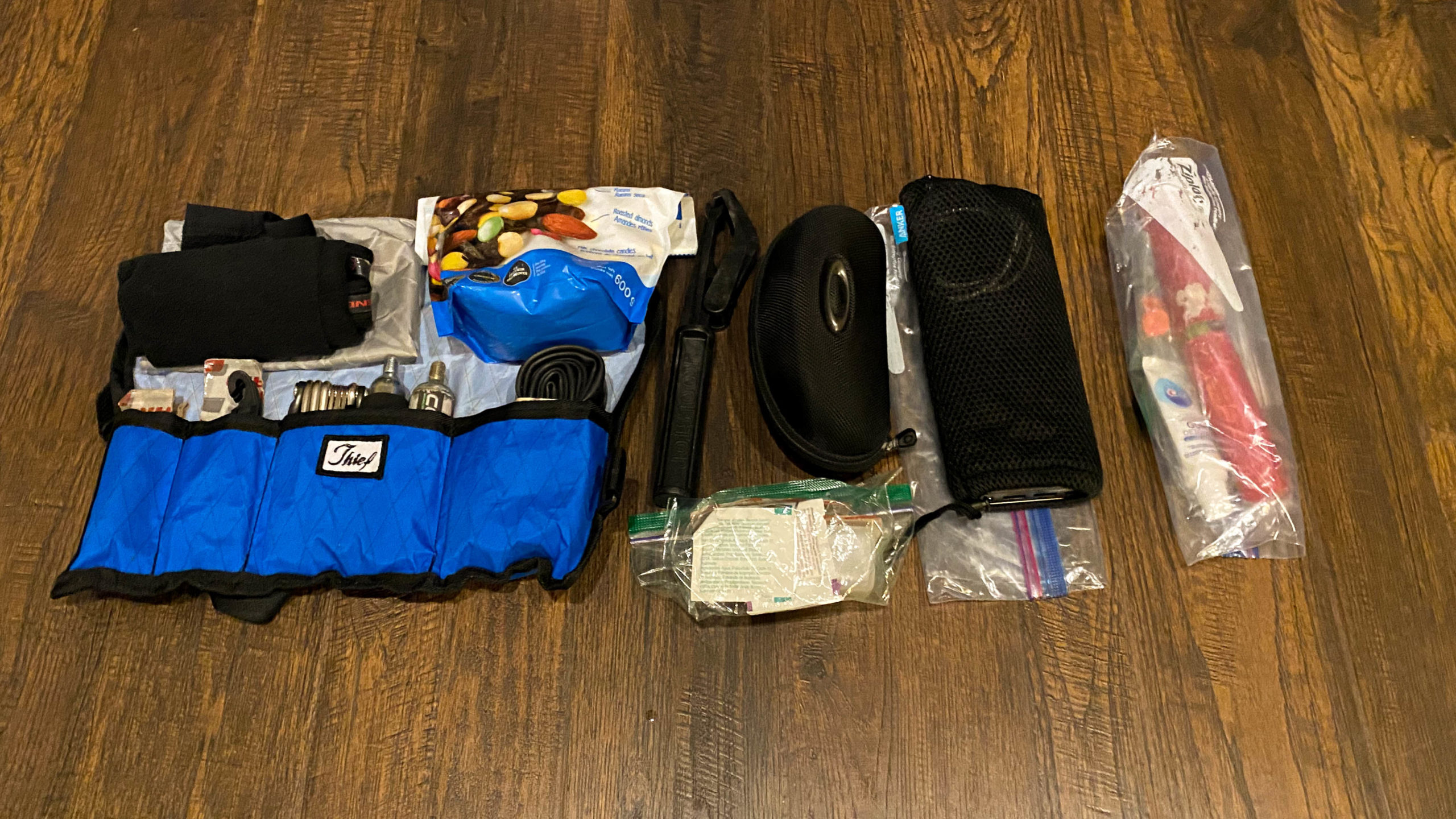
Bikepacking Setup – The Tent
Although not brought on this journey, the tent is the Big Agnes bikepacking tent which would have fit nicely under my front handlebars and the front handlebar bag.
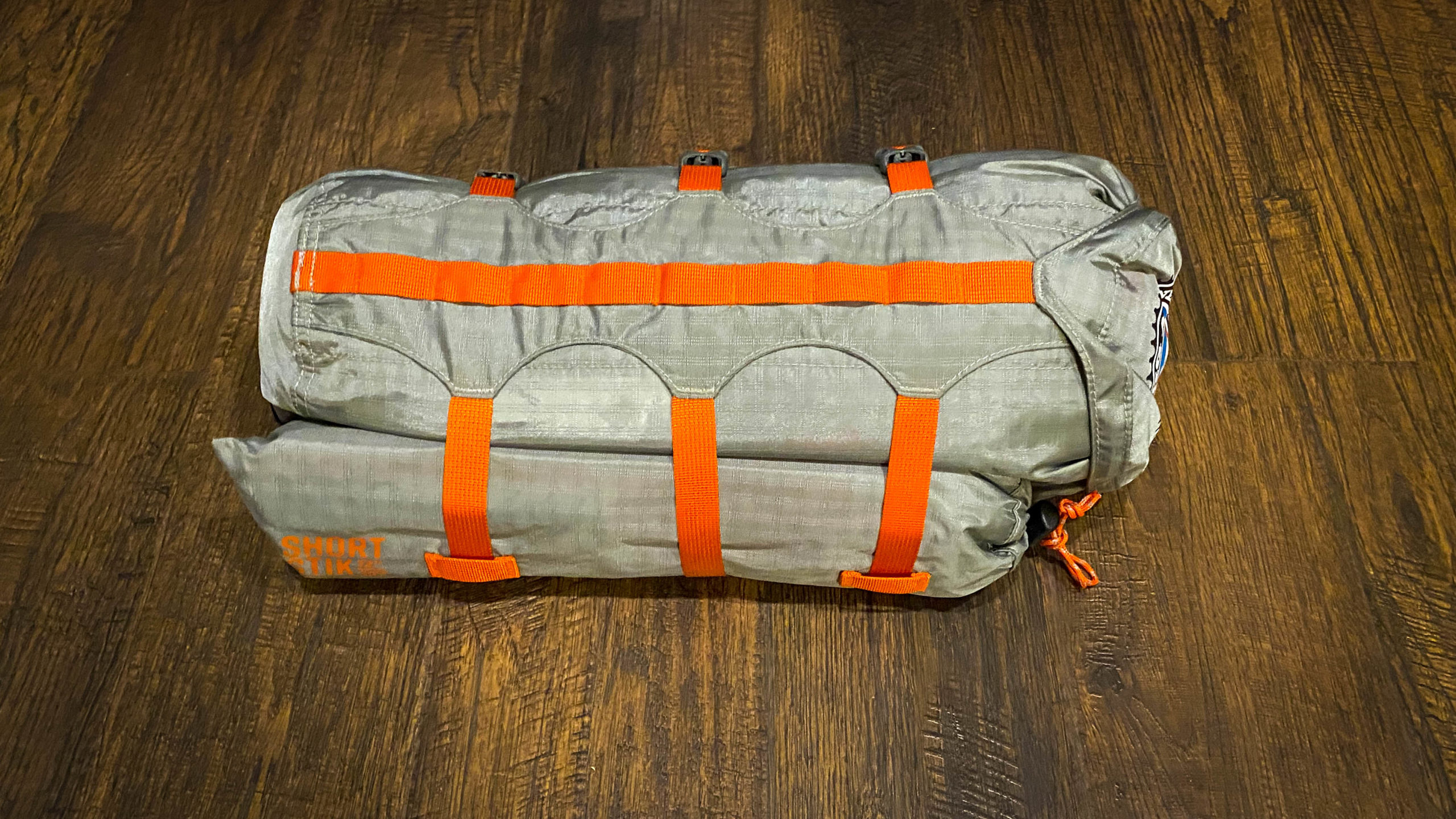
How did the bike handle?
Really well, in fact once I got going I barely noticed anything there.
Over the last few weeks, I’ve ridden pretty extensively with both the front handlebar bag and even a lightly packed frame bag, and the bike has always felt quite front-heavy, especially on anything mildly technical.
Having the seat packer on the back and more weight in the frame bag really balanced out the bike leading to a great feel even when navigating some light, easy singletrack and double track through the trails near Uxbridge.
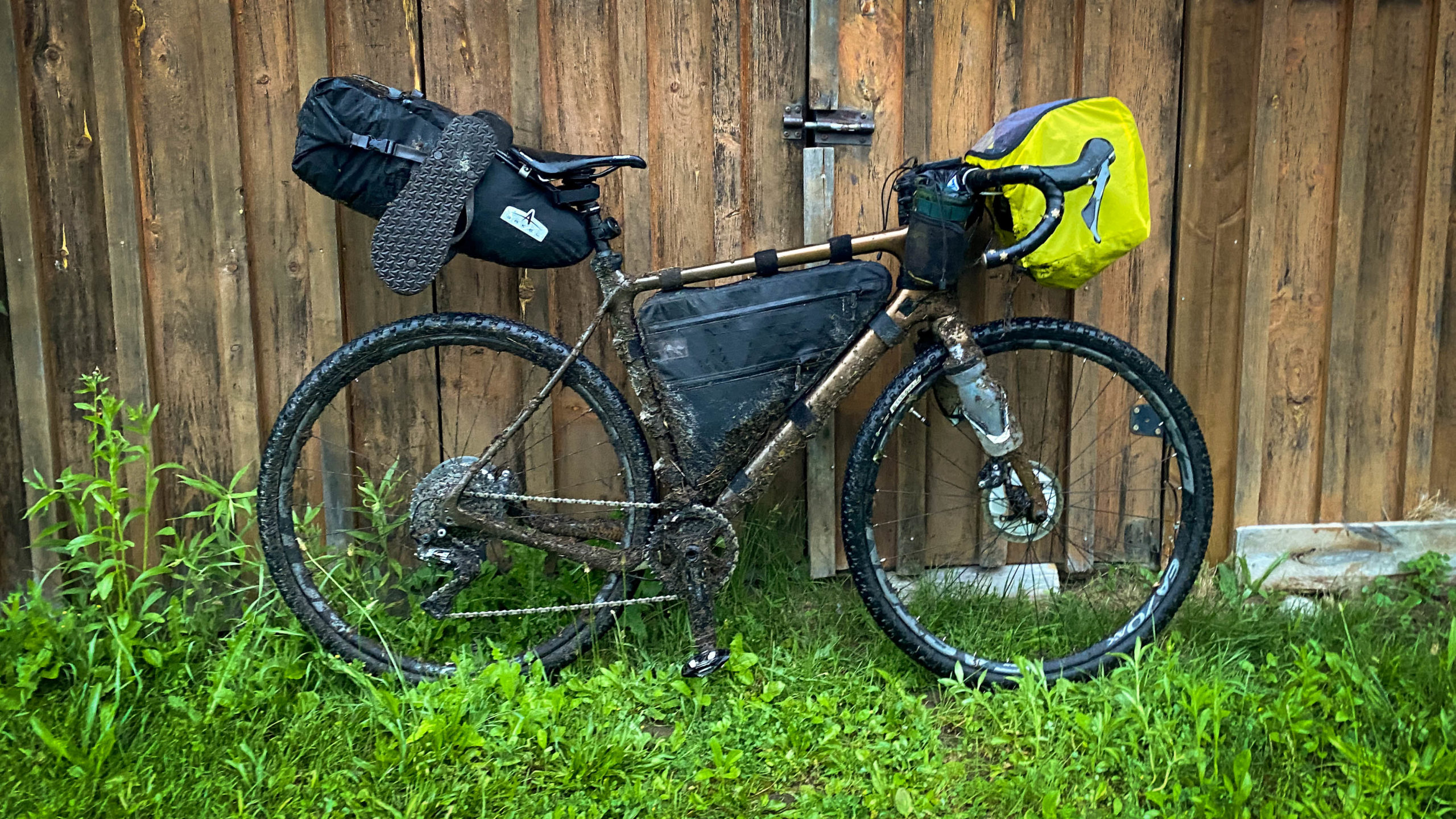
Final Thoughts
If this two-night trip taught me anything, it’s to clearly define the needs and wants of your bikepacking set up so that you can pack as light as possible.
If there was one thing I’d consider leaving at home other than the long johns, it would have been the sleeping bag liner. However, if I didn’t have access to a place to clean, and there was any chance I could get as messy as I did, then for sure, this would have been elevated from a want to a need.
The other comment would be around food. As mentioned, I didn’t need to pack much of anything. If I was going into the backcountry and didn’t have food options, this would have required another element of creativity, especially if more than one day of food was required.
I hope this helps someone else as they plan for adventures, and if you have any questions on my setup, please feel free to reach out.
Thanks for reading,
Cory
